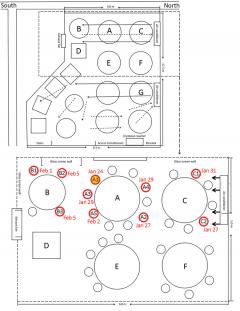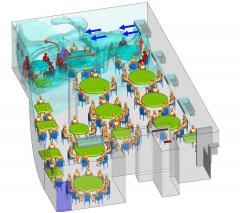Covid19

The transmission of SARS-CoV-2 Coronavirus (COVID-19) is an important research subject for public health. It is now known that airflow plays a large role in transmitting Covid-19. Professor Björn Birnirn has studied how airflow transmits COVID-19 in confined spaces. He created a model that predicts transmission rates in any given public space. The results can be used to alter real-life spaces to reduce COVID-19 infection rates.

At the start of the outbreak of SARS-CoV-2 Coronavirus (COVID-19), it was thought that the virus mainly spread through coughing and speaking, hence global public health advice to stay 2 metres (6 feet) apart. However, it was later discovered that droplets containing COVID-19 could travel via a turbulent cloud up to a distance of 7 to 8m when an individual violently coughs or sneezes. Even more crucially, it has been shown that transmission via small droplets and aerosols (a suspension of particles dispersed in air or gas) plays a larger role in transmitting the virus. COVID-19 contaminated aerosols can spread from an infected person simply breathing and can build up in a confined space with poor ventilation over time. As we begin to return to normal life and indoor public spaces, it is vital to ensure the transmission of COVID-19 is minimised. Björn Birnir has developed a computer model that unlocks the door to safer public spaces.